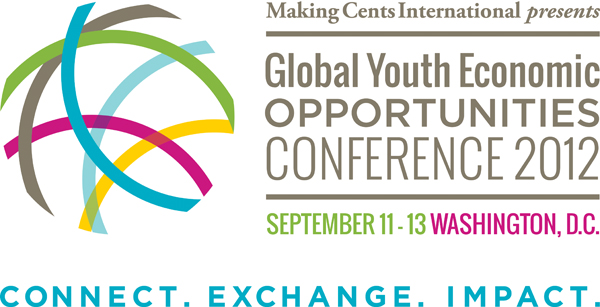Youth Economic Opportunities Conference: Opening remarks highlight need for sustainable, scalable and replicable programs
Insights from the 2012 Youth Economic Opportunities Conference
 September 11-13, 2012 | Washington, DC
September 11-13, 2012 | Washington, DC
The Global Youth Economic Opportunities Conference kicked off on Tuesday with opening remarks from Elenea Suarez of the Inter-American Development Bank, Fiona Macaulay of Making Cents International, and Nancy Lee of IDB’s Multilateral Investment Fund. Setting the tone for the conference, the opening speakers highlighted the need for scaling up the best models of youth programs, as well as the importance of sharing best practices and using evidence-based analysis to shape future strategy. Read highlights from the three opening speakers below.
Welcome Remarks by Elena Suarez, Inter-American Development Bank
After extending a very warm welcome from the IDB, Elena Suarez opened the conference with an overview of the youth employment landscape, both in Latin America and worldwide. She spoke about the Inter-American Development Bank’s commitment to youth economic development. Recognizing that youth can be powerful agents for change through social innovation, IDB Youth also emphasizes youth engagement and empowerment. “There is no more important agenda than this one,” Suarez said. She left the audience with the following encouragement regarding the conference: “We’re all gathered here to learn from each others’ experiences and to find new solutions to old challenges.”
Opening Address by Fiona Macaulay, Making Cents International
Making Cents CEO Fiona Macaulay began her remarks by talking about her love of cooking and how ingredients and recipes can come together to make something delicious. The goal of the conference, according to her, is to find those key ingredients that lead to “sustainable, scalable and replicable programs” to impact youth. M-Pesa has one recipe that many mobile operators have tried to replicate, but estimates suggest that only 1 in 15 have succeeded. Macaulay asked the audience to think about M-Pesa’s special ingredients. The Kenyan mobile money transfer service has a large network of well-managed agents, simple and transparent pricing, an easy enrollment process, and huge demand. Most copycats only focused on the technology and ignored the other ingredients. So, Macaulay said, technology isn’t enough. That’s part of what this conference is about: breaking apart key practices to find the key ingredients and how the context plays a role.
After a quick review of the conference tracks and some of the stats (128 presenters, 400+ attendees, 54 countries), she took a moment to have people meet their neighbors—to get that “conference high” from meeting new people with whom they share a passion. She concluded with the exciting announcement that Making Cents has launched the new Youth Economic Opportunities website and encouraged people to use it as a place to keep connecting. Site features include an interactive project map; library for publications, resources, and projects; and blog.
Opening Address by Nancy Lee, IDB’s Multilateral Investment Fund
Nancy Lee began her remarks stating that while it is a pleasure to partner with Making Cents on the youth agenda, it is also a responsibility for the IDB to share knowledge and best practices in this area. She spoke about the MIF’s recent break from project implementation, time that they used in retrospection “to absorb the most important lessons learned and have that evidence-based analysis shape our strategy going forward.” The resulting strategy related to youth is outlined in the MIF’s new report, “Give Youth a Chance: An Agenda for Action.”
During the review, the need for scaling up the best models also became clear, so Lee spoke about the MIF’s recently launched New Employment Opportunities initiative. NEO’s 10-Year goals are to:
- Train one million disadvantaged youth, ages 16-29, using models that incorporate best practices of job training programs
- Achieve job placement rates of at least 50 percent for its graduates
- Ensure that 50 percent or more of the youth trained are girls and young women
- Promote the adoption of high-impact training models in the government programs of at least 10 countries in the region
- Mobilize 1,000 companies to offer internships and employment opportunities for youth
- Strengthen the capacity of 200 job training providers



